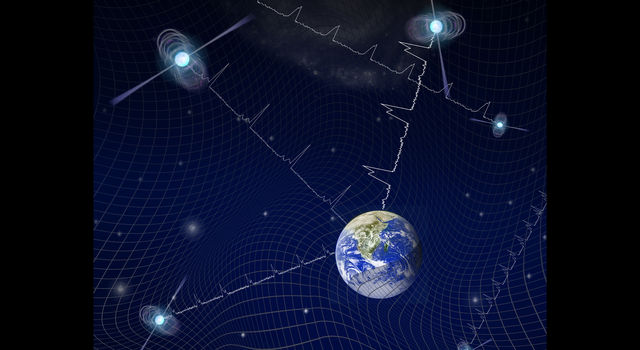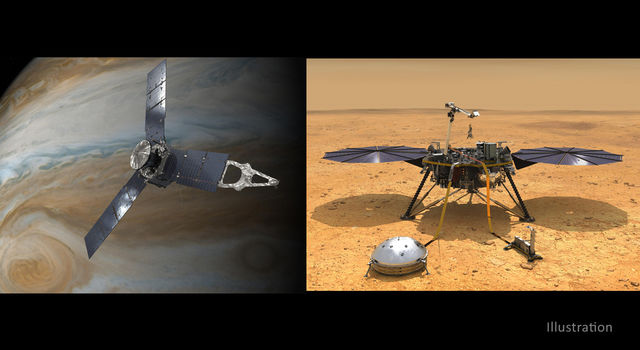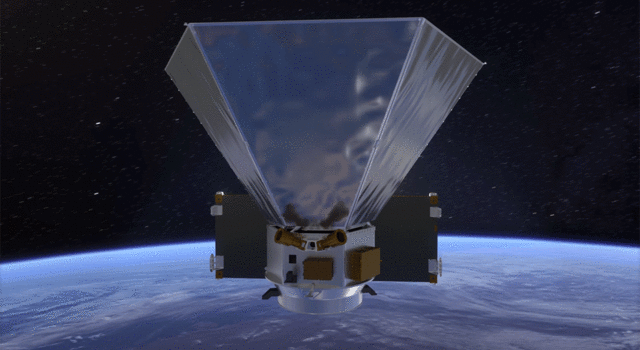Blogs | JPL | June 11, 2009
Five 'Holy Grails' of Distant Solar Systems
Angelle Tanner, a post-doctoral scholar at JPL and Caltech, studies planets in distant solar systems, called extrasolar planets. The golden prize in this field is to find a planet similar to Earth - the only planet we know that harbors life. While more than 350 extrasolar planets have been detected, most are gas planets, with no solid surface. Many are located in orbits closer to their parent star than Mercury is to the sun. In other words, not very similar to Earth.
Here's Tanner's short list of what she and her colleagues would love to find in another planet - the elements that might enable life on another world. With the powerful tools scientists have now and with new technology and missions coming soon, the odds are going up for finding an Earth-like planet, if one is out there.
Tanner's top five "holy grails" of extrasolar planet research are hoped-for findings that she predicts will happen within the next 15 years.
1. First planet that weighs the same as Earth
Although most planets discovered have been giant gas planets with no surface, a handful of rocky planets, called super-earths, have also been detected. Super-earths are akin to Earth in their rocky make-up, but with a mass up to 10 times that of Earth.
There is no reason these planets could not host an atmosphere or even life as we know it. The discovery of a true Earth clone – Earth-like in size and make-up -- could happen within a year or two. NASA's recently launched Kepler mission has the ability to find planets as small as Earth.
2. First Earth-sized planet in the 'habitable zone'
The so-called habitable zone is the area around a star where a rocky planet could have the right temperature to have liquid water on its surface. In our solar system, Earth sits in the habitable zone. Venus sits just inside the habitable zone and is too hot while Mars is just outside and too cold. Finding an Earth-sized planet is this geographically desirable location is the next big step in extrasolar research. One super-earth has already been detected near to its parent star's habitable zone and it is only a matter of time -- using existing technologies –- before a planet is found in this friendly environment. Ground-based telescopes and NASA's Kepler mission are searching stars within a few hundred light years of Earth right now.
3. First atmosphere on a rocky planet
A planet's atmosphere, along with other factors, helps determine whether a planet could sustain life. For the past few years, astronomers have studied the atmospheres of Jupiter-like, extrasolar planets. These gas giant planets have hydrogen-rich atmospheres inhospitable to life as we know it. However, many of the techniques developed for studying gas giants could be used to study the atmospheres of super-earths. This would mark an important step in beginning to understand the environment of rocky planets.
4. First hint of habitability and life
Once astronomers have enough Earth-sized planet atmospheres to study, they will be looking for biosignatures – indicators in a planet's atmosphere that the planet might be hospitable to or even support life. Some of the molecules they will be looking for include water vapor, methane, ozone and carbon dioxide. NASA's James Webb Space Telescope, scheduled to launch in 2014, will provide scientists with the sophisticated instruments needed for these potential observations on super-earths orbiting small stars. Assuredly, astrobiologists will be studying such data for years to come since potential life may, or may not be, in a form we expect. Keeping an open mind is critical.
5. The unexpected
The final grail -- the unexpected. The history of science is marked with findings that were never predicted. As in all fields of science and exploration, it's what we don't know that will be the most exciting.
For more information about extrasolar planets, visit planetquest.jpl.nasa.gov
TAGS:UNIVERSE, SOLAR SYSTEM, EXTRASOLAR PLANET, HABITABLE ZONE, PLANETQUEST







